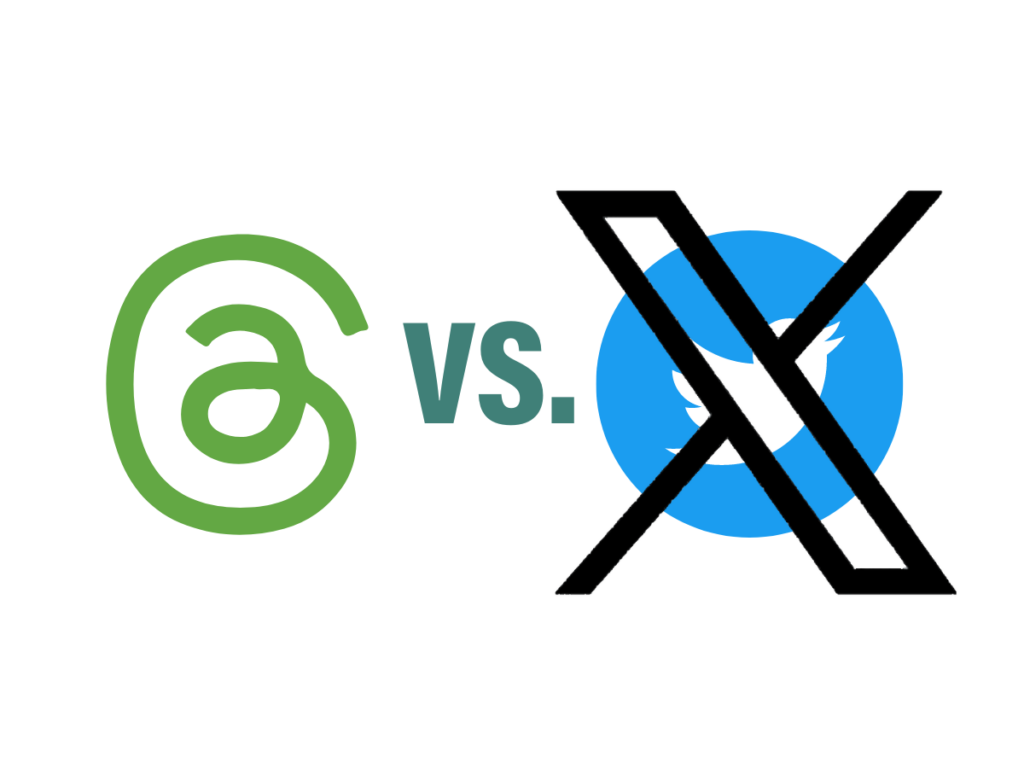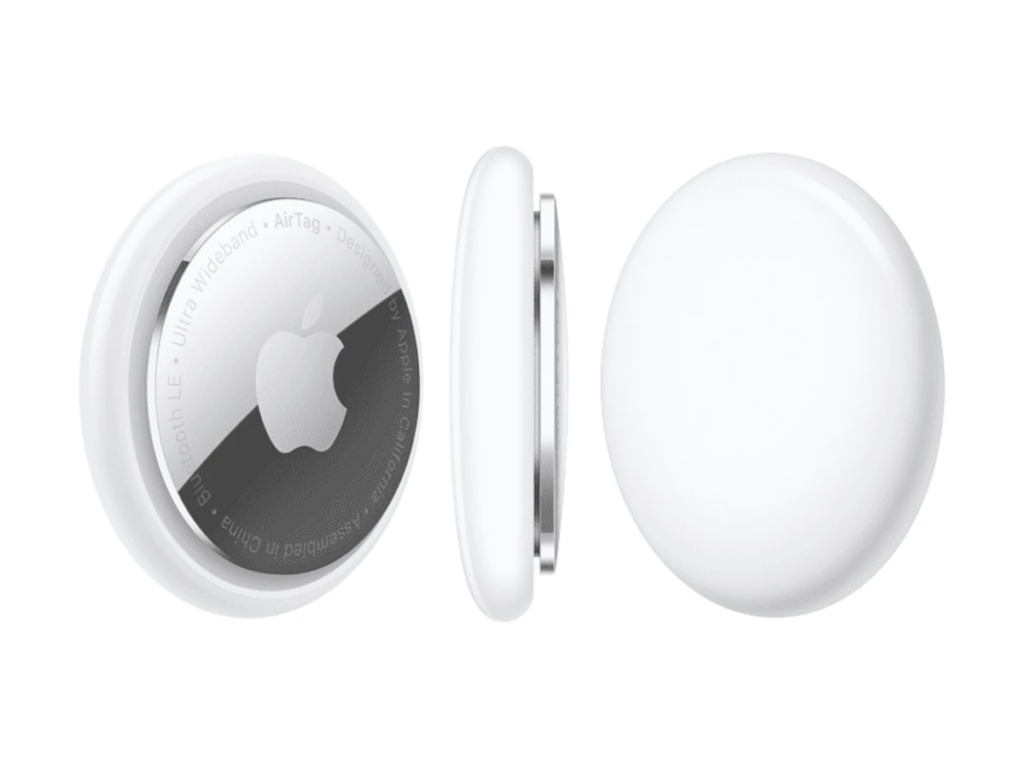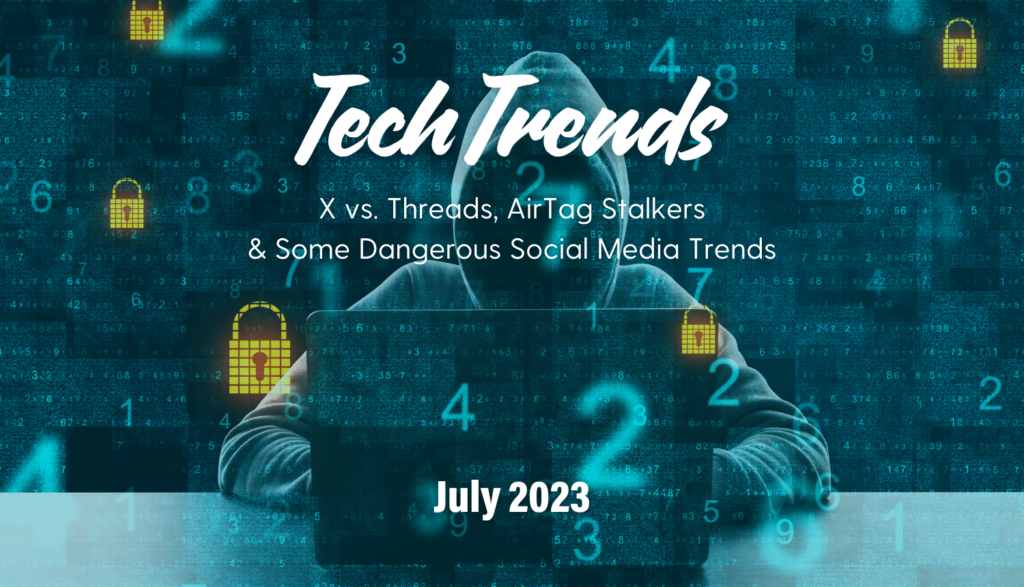Each month, Plugged In publishes a blog with the latest technology and social media trends. We’ll let you know what changes to keep an eye out for. We’ll offer some tips about how to handle technology in your family. And of course, we’ll give you the scoop on those things called “hashtags” so you can stay up to date on all the things your kids might be obsessed with.
And ICYMI (“in case you missed it,” for those up on their social acronyms), you can check out June’s Tech Trends, too.

Bye Bye Birdie, er, Twitter
Earlier this month, Meta (Facebook’s parent company) launched Threads, a new social media app similar to Twitter. Many thought Threads spelled doom for Elon Musk’s Twitter, especially at first. It quickly became fastest-growing app in history with 100 million users just five days after its launch on July 10. Along the way, the Tesla CEO even challenged Meta’s Mark Zuckerberg to a cage fight. But early adopters apparently went out the back door almost as fast, since Threads experienced a 70% drop in active users this week.
Well, Twitter is no more. But surprisingly, it has almost nothing to do with Threads.
Twitter has been rebranded as X. And aside from that, it’s not much different from Twitter. It’s still being used as a form of amateur news reporting, a marketing tool and a social-messaging platform. Even the web address hasn’t changed: x.com redirects to twitter.com.
Really, the change has more to do with Elon Musk’s apparent affinity for the letter “X” as a brand than it does with any meaningful changes to Twitter. And Twitter’s CEO, Linda Yaccarino, has stated that “there’s absolutely no limit to this transformation,” meaning X could morph into something else entirely in the coming years.

How to Head Off AirTag Stalkers and Thieves
I’m the type of person who misplaces my phone, glasses, wallet, etc. about 5 times a day. Often, I look to my spouse and ask, “Have you seen my … ?”
AirTags are a great innovation that can help you track down the missing objects they’re attached to. Some folks have used them to locate lost luggage while traveling. Others have used them to remember where they parked their car.
But since the AirTags’ launch in 2021, there’s been a latent risk involved with the technology: the chance that someone could use them to rob or stalk you. Someone could slip an AirTag into your bag unnoticed and follow you home. Another could use it to track your car and steal the vehicle when you aren’t around.
And while early warnings from cybersecurity experts were ignored, Apple and Android are now cracking down.
If you have an Apple iPhone and the correct notifications are enabled, it can alert you if a Bluetooth device (which is what AirTags are) “is away from its owner and moving in tandem with you for an extended period of time.”
If you’re using an Android smartphone, for now, you’ll have to rely on the Tracker Detect app. However, that is quickly changing since Apple and Google announced their intention in May to draft an “industry-wide specification focused on how users could be alerted to unwanted tracking from Bluetooth devices.”
If you don’t have a smartphone—or just don’t have it on hand—you’ll have to rely on visual and audible clues. AirTags are circular white discs, slightly larger than a quarter. But they’ll also start beeping if away from their owners for 24 hours.
The most important thing to do if you find an unknown AirTag on your person or possessions is to alert the police. You can also remove the AirTag’s battery for extra security.
It’s pretty creepy to think about the ways technology can potentially spy on us. I still have friends who keep a piece of opaque tape over their webcams when they aren’t in use. And more and more people I know are finally switching off location services on social media apps. But the best advice I can offer to those who might be worried is to simply stay alert and if you see something, say something.

#HashtagTrending
Usually, I reserve this space for popular trends in order to help parents keep up with what their teens might be following on social media. (And I’ll likely resume that pattern next month.) However, this month there’s been an uptick in the prevalence of dangerous trends that teens are unwittingly (or perhaps intentionally) participating in after seeing them on social media. So here they are, in all their problematic glory.
- “Bed Rotting” – This term refers to prolonged periods of bed rest, sometimes lasting an entire day or even multiple days while binge-watching shows and scrolling through social media outlets. Some influencers have touted this as “self-care,” but health experts warn “it can be harmful to mental and physical health,” even “contributing to depressive episodes.”
- “Beer Tanning” – Basically, folks are substituting beer for sunscreen and tanning lotions. A dermatologist at the Cadogan Clinic stressed the dangers of this practice since “this method does not provide any protection against the harmful effects of ultraviolet (UV) radiation from the sun.” They also added “UV radiation is a known carcinogen and a major contributor to skin damage, which can manifest as sunburn, premature ageing, and an increased risk of skin cancer, including melanoma.”
- “TikTok Diets” – These often have many names—“#highprotein,” “#lowcarb,” “#lowcalorie”—but the important thing to note here is that many of the creators of this type of content have no real credentials (or at least none that can be verified). So remind your teens that they shouldn’t participate in any sort of diet, cleanse or fast without consulting you and/or a medical or dietary professional first.
- “Borax Benefits” – You’d think people would know better than to ingest products intended for cleaning. Unfortunately, that’s not the case as several “health nuts” on TikTok and other social media channels are claiming to consume borax to help with “inflammation, arthritis and even auto-immune conditions.” Their videos show the influencers dissolving the substance in water and then drinking it. And experts are urging families that there is absolutely zero evidence to support these claims and that consuming borax could leave some people “seriously unwell.”
- “Prime Energy Drinks” – Popularized by YouTube star Logan Paul, many online gamers are claiming this energy drink is actually making them better at games. However, experts warn parents that the drink contains way more caffeine than is recommended for teenagers, the product’s target audience.
And, of course, there’s always a number of trends involving dangerous stunts or simply just copying what your friends are doing on social media, such as underage drinking or illegal drug use.
So parents, the biggest takeaway here is this: Make sure your kids know the potential dangers of any activities they try or products they purchase after seeing them online. Remind them that influencers are often paid to advertise products regardless of potential side effects. And if their friends are the culprits, it never hurts to rehash the old adage, “If all your friends jumped off a cliff, would you too?”







One Response
-There are times when I can appreciate social media and there are also times when I wish the idea of social media had never been conceived.